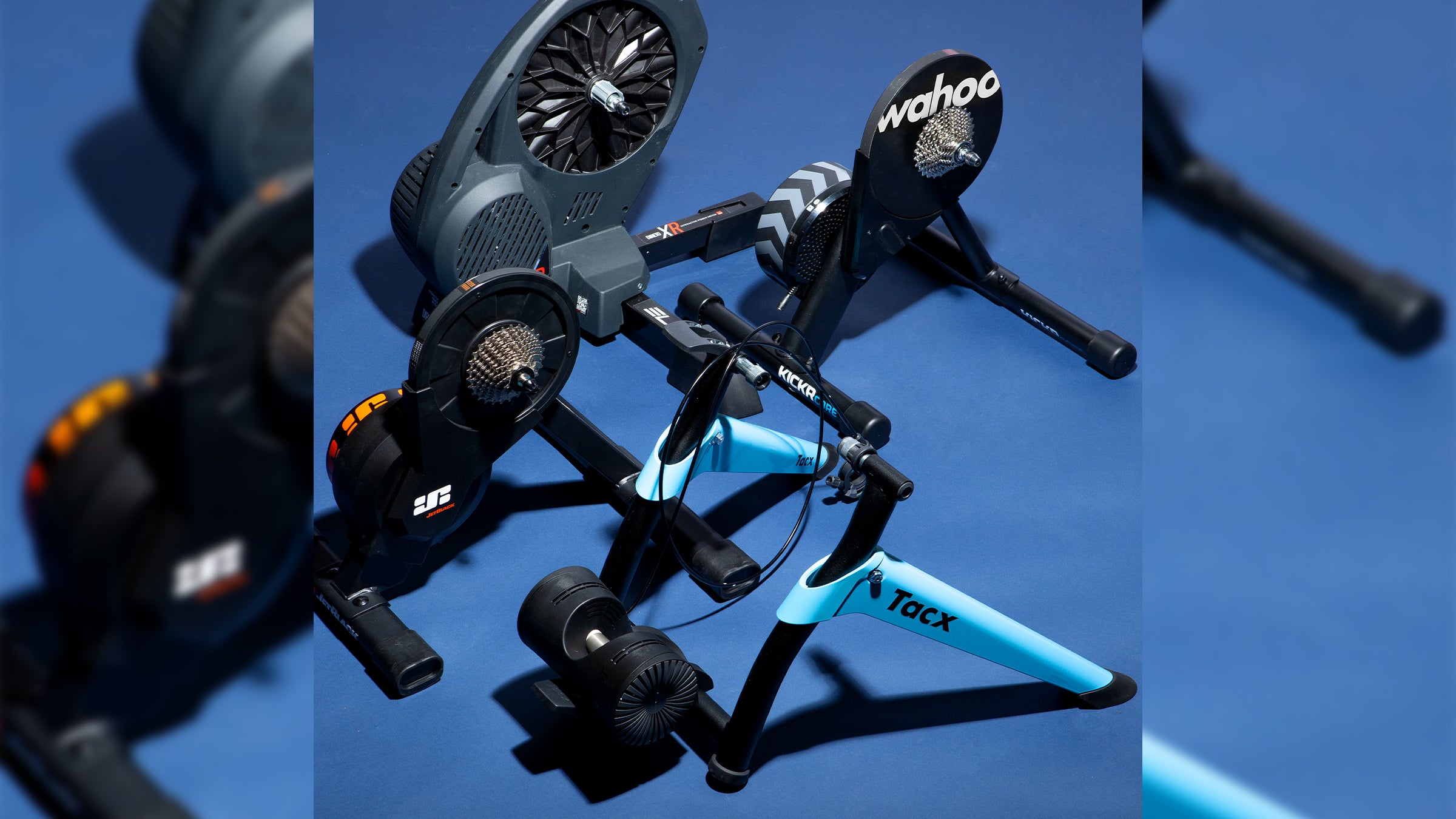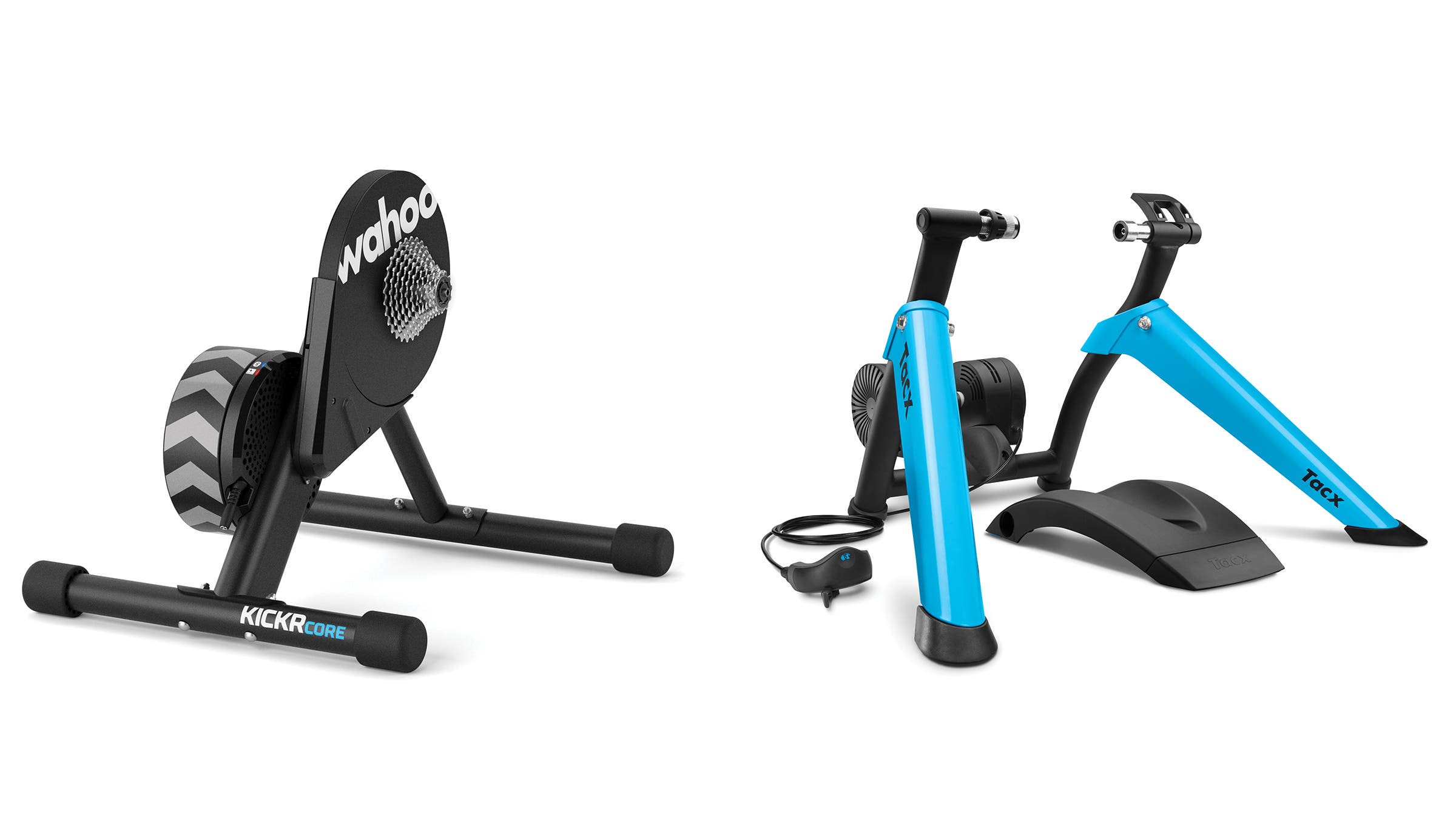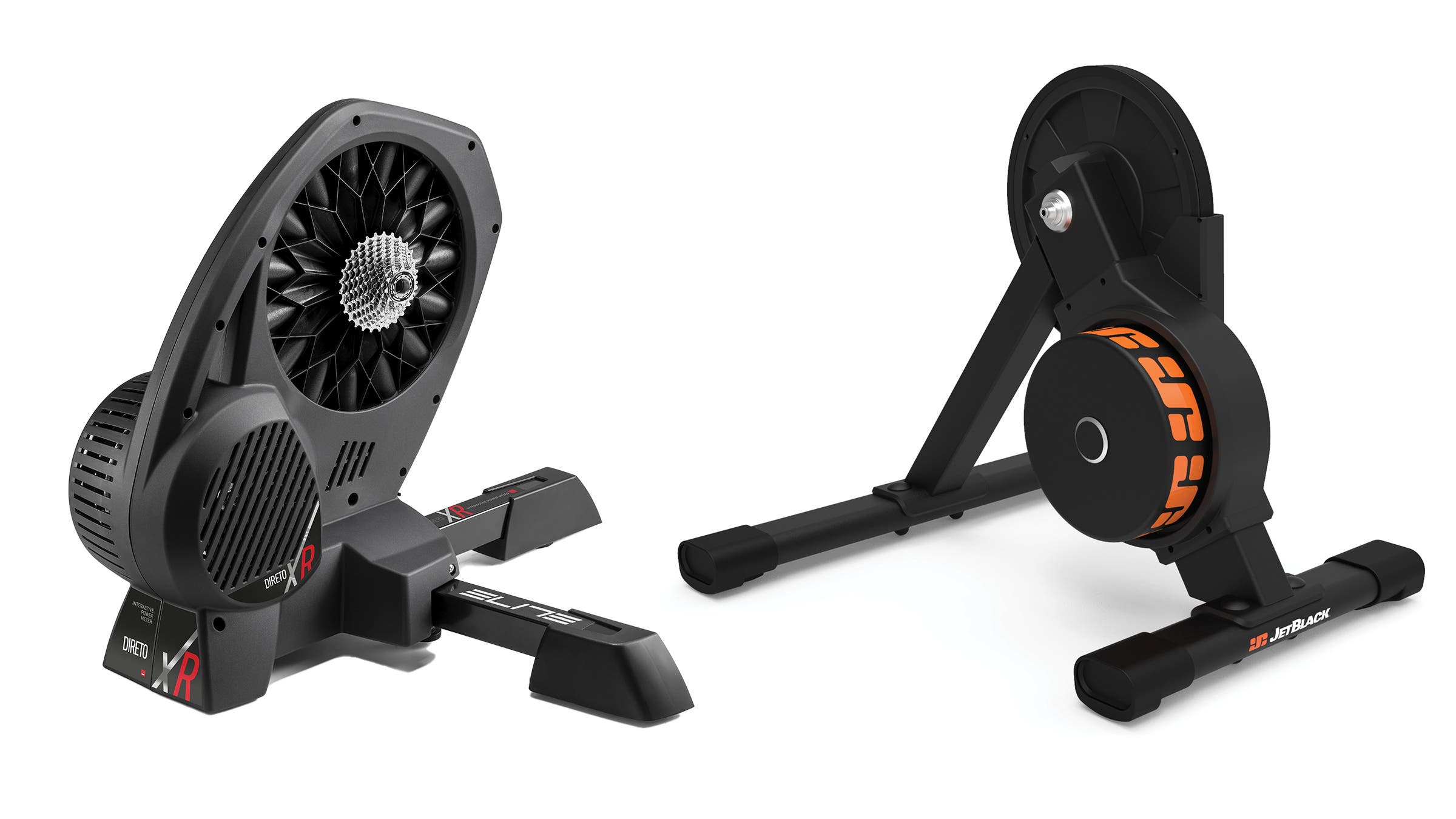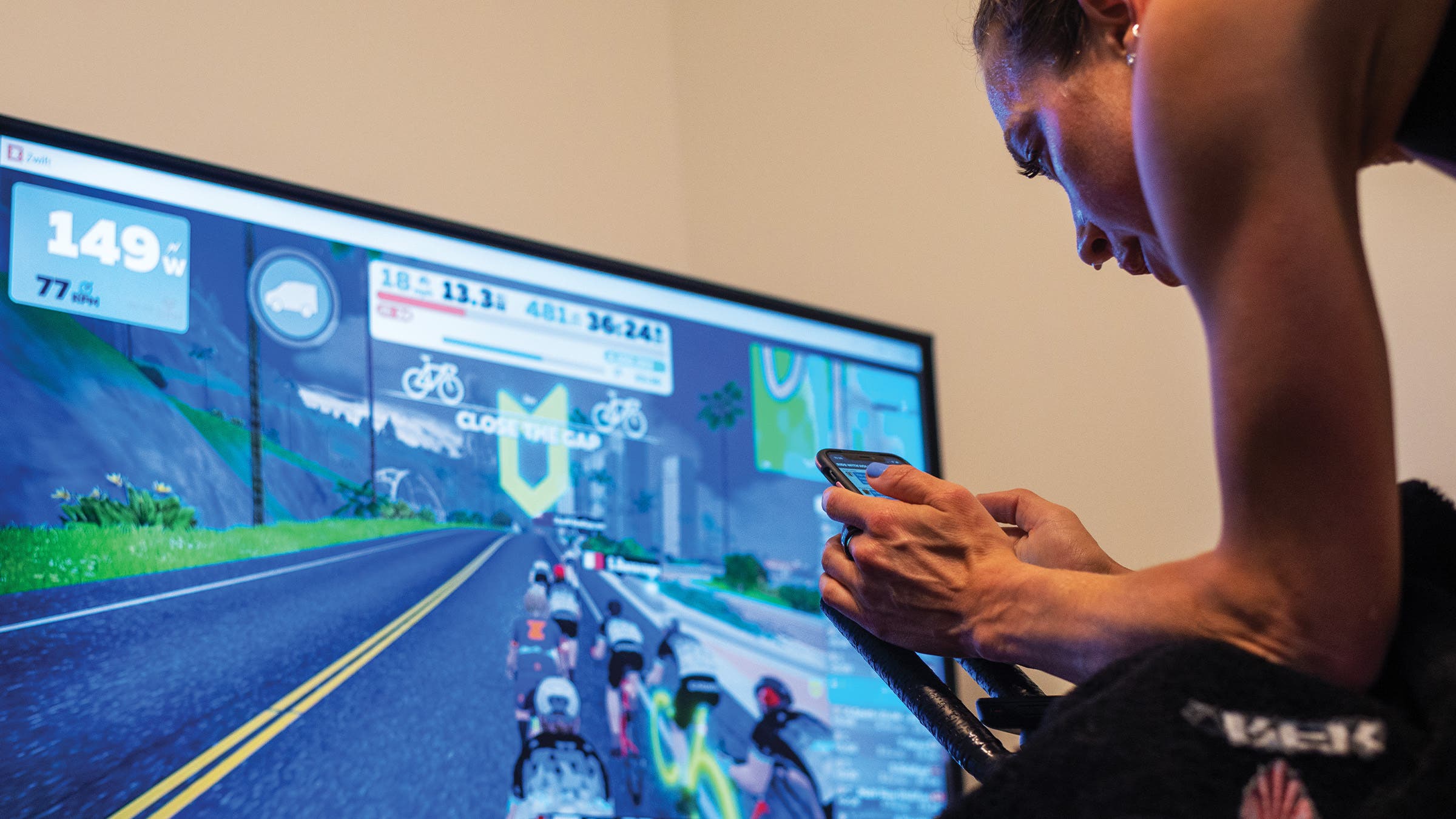The Smart Trainer Explainer

(Photo: Brad Kaminski)
It wasn’t that long ago that an indoor cycling trainer (some people call them “turbo trainers”) was considered advanced if you could change the resistance without having to get off your bike. But times have changed, and today’s trainers are smarter than ever before. If your indoor setup sounds more like the trainer in the first sentence above, then you could be missing out on an entire world within indoor cycling.
Are You Smart?
You may have heard the term “smart trainer” before, and no, don’t worry they won’t slowly become self-aware and eventually take over the Earth (hopefully). A smart trainer is simply a trainer that not only reads power and outputs it to a connected device (a cycling computer, smartwatch, laptop, etc.), but can also change resistance based on signals from that device. This means that you can control your resistance via your device, see how hard (or fast) you’re riding, and also let an external program or environment control your resistance for you.
A smart trainer opens up a world of virtual cycling environments (see below) and customized, automated control of workouts. Want to virtually “ride” the Ironman Kona course? You can feel each of the hills, virtually (sorry, hot, humid island winds not included). Want to have your indoor workout automatically change resistance to prescribed wattages while you hold your cadence? That’s easy with a smart trainer.
But smart trainers aren’t perfect for every tri situation: In almost all instances they need electrical power, so wave goodbye to your brick session far from the comfort of an outlet. Also, smart trainers are expensive—not necessarily a wise investment if you’re only riding indoors a few days per year. Plus, the good news about the smart trainer craze is that “dumb” trainers are benefitting from the trickle-down effects by getting more robust and less expensive. If you don’t want to do any virtual cycling and/or you already have a power meter on your bike, then a dumb trainer might not be so dumb after all.

How to buy the best smart trainer for triathletes
As trainers have become smarter, they’ve also become more complex. Even the grid on our trainer buyer’s guide below looks like a list of computer specs and features. While some specs on today’s trainer are very important, some just don’t matter that much for 90% of triathletes. Below we help you wade through what matters and what doesn’t.
These Things Matter
Wheel on or wheel off: This mostly boils down to cost and how often you use the trainer. If your bike will be trainer bound for weeks or months at a time, the stability and accuracy of a wheel-off trainer is tough to beat. Using it once a week or less indoors? A wheel-on trainer will be cheaper, quicker to attach, detach, store, transport, and set up. Have thru-axles? Wheel-off is your best bet, but those planning to use multiple bikes on one trainer might prefer wheel-on to avoid swapping out adapters or cassettes.
Noise: This is important—particularly if you live in a shared building, you have kids, or you like to watch TV or listen to music without headphones. Most wheel-off trainers are quieter because there’s no tire contacting a drum or spinning spokes.
Powered: This is also a big one for triathletes. If you want to use your trainer at the pool or track for a brick, you probably don’t want to be running 100 feet of extension cable across the facility. Also: If you want to use your trainer to warm up at your next race, you definitely don’t want to be relying on power.
Calibration: Most—but not all—smart trainers require calibration to get consistent readings from their built-in power meter. Usually it involves a simple rolldown performed in an app, while some auto-calibrate. Either way, calibration is important if you’re doing power-based workouts.
These, Not as Much
Flywheel weight: This spec can often indicate a heavy trainer overall (tough to transport/set up), but it also tells you how realistic the feel of the trainer will be. A heavier flywheel means more inertia, which feels more like riding on the road. Will a light flywheel diminish the quality of your workout? Not really.
Max Watts: For triathletes, this is not an incredibly important spec, as we’re typically not going near 1,000 watts while training. For someone who likes to do big sprint workouts, it’s nice to have, but unless you’re planning on joining a cycling team, you can ignore this. Max slope is a similar spec that simply lets you know how much of a virtual hill the trainer can simulate.

Virtual Cycling Environments
Basically unheard of even 10 years ago, virtual training environments have exploded over the last five years. By connecting a smart trainer to your smartphone or computer, you can ride virtual worlds that increase in speed and difficulty based on your output and increase (or decrease) resistance based on the virtual terrain.
Zwift, the most popular virtual cycling environment, has thousands of Zwifters who ride and interact in closed virtual worlds with virtual hills, events, power-ups, and more. Other virtual platforms like Kinomap, Rouvy, SYSTM, and TrainerRoad have libraries of workouts, classes, and even preloaded tri and cycling routes that let you experience the real thing, virtually.
For help finding the best indoor training software for you, check out our roundup of The Top Indoor Cycling Platforms.